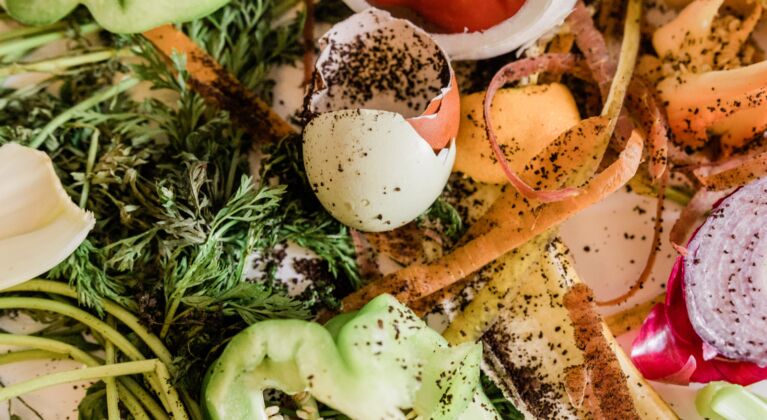

J&B Recycling Knowledge

JB Recycling | What Happens to your Food Waste?
Every year, the UK generates millions of tonnes of food waste. When not managed correctly, this waste can end up in landfill or be sent for incineration – contributing to greenhouse gas emissions and wasting valuable resources. However, when food waste is properly recycled, it can be transformed into something far more useful, helping reduce environmental harm. So, what happens to food waste after it’s collected?
We work with businesses all over the North East, to help them manage their waste in the most environmentally responsible way. Since launching our dedicated food wagon in April, we have seen huge success in diverting food from landfill and supporting our customers in meeting their sustainability goals.
You may have even spotted our food wagon out on the roads across the North East, which displays the full journey of food waste – showing how leftovers are transformed into energy and fertiliser, helping to grow new food once again.
Food Waste Wagon
Once food waste is collected, it is transported for treatment using a process called anaerobic digestion. This is a natural method where organic material is broken down by micro-organisms in an oxygen-free environment. As food waste decomposes, it produces biogas, which is captured and converted into renewable energy. This energy can be used to power homes, businesses, and even fuel transport. Another key output of this process is a nutrient-rich biofertiliser, which is spread on agricultural land to help grow new crops. The result is a circular system where food waste is repurposed to feed both energy systems and the soil, helping reduce emissions and support the UK’s sustainability goals.

More About Anaerobic Digestion
The process of anaerobic digestion begins with food waste collection from sources such as households, restaurants, and food processing facilities. This organic waste is gathered and transported to a treatment facility.
Once there, the food waste undergoes pre-treatment. This step usually involves shredding the waste into smaller pieces and mixing it with water to create a slurry. Any non-organic contaminants like plastic or metal are removed during this stage to ensure the material is suitable for digestion.
The prepared slurry is then fed into an anaerobic digester, which is a sealed, oxygen-free tank. Inside this digester, microorganisms break down the organic material through four biological stages:
1) Hydrolysis – large organic molecules are broken into simpler compounds like sugars and amino acids.
2) Acidogenesis – these compounds are converted into fatty acids, alcohols, hydrogen, and carbon dioxide.
3) Acetogenesis – the products are further broken down into acetic acid, hydrogen, and CO₂.
4) Methanogenesis – methane-producing microbes (methanogens) convert these into methane (CH₄) and more CO₂.
The process produces two key outputs:
- Biogas, a mixture mainly of methane and carbon dioxide, which can be burned to generate heat and electricity, or further purified into biomethane for use as vehicle fuel or injection into the gas grid.
- Digestate, the nutrient-rich residue left after digestion. This can be separated into a solid fraction, which can be used as compost or soil conditioner, and a liquid fraction, which serves as a natural fertilizer.
Why is this process useful?
This process is becoming increasingly important as environmental legislation evolves. Under the new Simpler Recycling regulations in England, all businesses with more than 10 full-time employees are required to separate and recycle food waste as of April 1st. This change means that if you run a café, restaurant, office, school, or any other organisation with food waste, you must now provide a designated food waste bin.
What can we offer you?
To help businesses adapt, we offer a range of practical food waste container options. These include 7 litre and 23 litre kitchen caddies for everyday use, as well as larger 240 litre bins suitable for higher waste volumes. This range ensures that whether you’re handling small-scale food prep or large commercial quantities, we’ve got a solution that fits. See our full range here - J&B Recycling - Food Waste Collection North East | J&B Recycling
The best way to tackle food waste is to prevent it in the first place - cutting down on surplus, improving stock control, and raising awareness around wasteful habits. But when waste does occur, it doesn’t have to end up in landfill or incineration. With the right systems in place, food waste can be turned into something far more positive: clean energy, nutrient-rich fertiliser, and a reduced carbon footprint. It can also save you money!
If your business is ready to reduce waste and stay compliant with Simpler Recycling, get in touch with our team today.

Delivery & collection
services covering
the UK
Where we operate
Request a quote
For an instant quote, call our team on
01429 272810- 1. Waste type
- 2. Company Details
- 3. Enquiry Details
- 4. Thank you